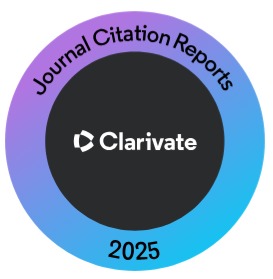Patient Satisfaction Level and Vision-Related Quality of Life: A Comparison between Trifocal and Diffractive Extended Depth of Focus (EDOF) IOLs
Keywords:
Cataract, Corrected Near Visual Acuity (CNVA), Extended Depth of Focus (EDOF), Intraocular Lens, Trifocal, Visual Related Quality of Life (VR-QOL), Uncorrected Near Visual Acuity (UNVA), Uncorrected Intermediate Visual Acuity (UIVA).Abstract
OBJECTIVE: To compare patient satisfaction level and vision-related quality of life after Trifocal and EDOF implants to treat cataracts among the population of Southern Punjab.
METHODOLOGY: This comparative practice-based study was conducted at the Sight Centre of Bahawalpur City of Southern Punjab from August 2022 to July 2023. Informed consent was obtained from all the subjects. A total of n=120 eyes were operated in two EDOF and Trifocal treatment cohorts. VR-QOL was assessed for near, intermediate, and distant vision. The data was analyzed on SPSS version 27. The p-value < 0.05 was considered statistically significant.
RESULTS: There were n=29 (48.3%) males and n=31 (51.6%) females. The majority n=21 (35%) of subjects were aged 40-49. It was revealed that trifocal IOL demonstrated improved mean rank for near and intermediate vision. Statistically, a significant difference was found between putting thread into the needle and the mobile phone's utility at p-values of 0.047 and 0.040, respectively. Trifocal IOLs frequently generated the halo photic effect for light scattering at a P-value of 0.0001. Significant improvement was revealed in the VA of both eyes. The vision improved (100%) with Trifocal and EDOF group treatment options. Both treatment cohorts were satisfied with the final surgical outcome.
CONCLUSION: VA was improved after implanting Trifocal and EDOF IOLs. Trifocal IOL demonstrated better performance at near & distant vision. The halo photic effect was generated more frequently by the trifocal IOLs. Patients were equally satisfied with the surgical outcome of both treatment options.
References
Akpolat C, Demir M, Cevher S, Ozturk SZ, Yesiltas S. The impact of phacoemulsification surgery on vision-related quality of life in senile cataract patients. Ther Adv Ophthalmol. 2022; 14: 25158414211063293. doi: 10.1177/2515841 4211063293.
GBD 2019 Blindness and Vision Impairment collaborators, Vision Loss Expert Group of the Global Burden of Disease Study, Steinmetz JD, Bourne RR, Briant PS, Flaxman SR et al. Causes of blindness and vision impairment in 2020 and trends over 30 years, and prevalence of avoidable blindness in relation to VISION 2020: the Right to Sight: an analysis for the Global Burden of Disease Study. Lancet Glob Health. 2021; 9(2): e144-e160. doi: 10.1016/ S2214-109X(20)30489-7. Epub 2020 Dec 1.
Organization WH. Blindness and Vision impairment. World Health Organization. October 14, 2021. Available from: http://www.who.int/news-room/fact-sheets/detail/ blindness-and-visual-impairment.
Shah K, Frank CR, Ehrlich JR. The association between vision impairment and social participation in community-dwelling adults: a systematic review. Eye. 2020; 34(2): 290-298. doi:10.1038/s41433-019-0712-8.
Miyata K, Yoshikawa T, Harano A, Ueda T, Ogata N. Effects of visual impairment on mobility functions in elderly: results of Fujiwara-kyo Eye Study. PLoS One. 2021; 16(1): e0244997. doi:10.1371/journal.pone.0244997.
IAPB Vision Atlas. Number of people affected by vision loss; 2020. Available from: http://atlas.iapb.org/global-burden-vision-impairment/gbviglobal- cause-estimates. Accessed May 10, 2022.
Binder KW, Wrzesi?ska MA, Kocur J. Anxiety in persons with visual impairment. Psychiatr Pol. 2020; 54(2): 279-88. doi: 10.12740/PP/OnlineFirst/85408. Epub 2020 Apr 30.
Makabe K, Oshika T, Inamura M, Hayashi K, Sugita G, Kozawa T et al. Influence of cataract surgery for the first or second eye on vision-related quality of life (VR-QOL) and the predictive factors of VR-QOL improvement. Jpn J Ophthalmol. 2020; 64(5): 468-477. doi: 10.1007/s10384-020-00762-z. Epub 2020 Aug 2.
Bourne RRA, Flaxman SR, Braithwaite T, Cicinelli MV, Das A, Jonas JB et al. Magnitude, temporal trends, and projections of the global prevalence of blindness and distance and near vision impairment: a systematic review and meta-analysis. Lancet Glob Health. 2017; 5(9): e888-e897. doi:10.1016/S2214-109X(17)30293-0.
Bilbao-Calabuig R, Gonzalez-Lopez F, Amparo F, Alvarez G, Patel SR, Liovet-Osuna F. Comparison between mix-and-match implantation of bifocal intraocular lenses and bilateral implantation of trifocal intraocular lenses. J Refract Surg. 2016; 32(10): 659-663. doi: 10.3928/1081597X-20160630-01.
Monestam E, Wachtmeister L. Dissatisfaction with cataract surgery in relation to visual results in a population-based study in Sweden. J Cataract Refract Surg. 1999; 25(8):1127-34. doi: 10.1016/s0886-3350(99)00135-2.
Wan Y, Zhao L, Huang C, Xu Y, Sun M, Yang Y et al. Validation and comparison of the National Eye Institute Visual Functioning Questionnaire?25 (NEI VFQ?25) and the Visual Function Index?14 (VF?14) in patients with cataracts: a multicentre study. Acta Ophthalmol. 2021; 99(4): e480-e488.
Packer M, Fine IH, Hoffman RS. Functional vision, contrast sensitivity, and optical aberrations. Int Ophthalmol Clin 2003; 43(2): 1-3. doi: 10.1097/00004397-200343020-00003.
de Medeiros AL, Saraiva FJ, Iguma CI, Kniggendorf DV, Alves G, Dias Chaves MA et al. Comparison of visual outcomes after bilateral implantation of two intraocular lenses with distinct difractive optics. Clin Ophthalmol. 2019; 13: 1657-1663.
Shen Z, Lin Y, Zhu Y, Liu X, Yan J, Yao K. Clinical comparison of patient outcomes following implantation of trifocal or bifocal intraocular lenses: a systematic review and meta-analysis. Sci Rep. 2017; 7: 45337. doi: 10.1038/srep45337
Cao K, FriedmanDS, Jin S, Yusufu M, Zhang J, Wang J et al. Multifocal versus mono-focal intraocular lenses for age-related cataract patients: a system review and meta-analysis based on randomized controlled trials. Surv Ophthalmol. 2019; 64(5): 647-658. doi: 10.1016/j.survophthal.2019.02.012. Epub 2019 Mar 6.
Wolfsohn JS, Davies LN. Presbyopia: effectiveness of correction strategies. Prog Retin Eye Res. 2019; 68: 124-143. doi: 10.1016/j.preteyeres.2018.09.004. Epub 2018 Sep 19.
Zhong Y, Wang K, Yu X, Liu X, Yao K. Comparison of trifocal or hybrid multifocal-extended depth of focus intraocular lenses: a systematic review and meta-analysis. Sci Rep. 2021; 11(1): 6699. doi: 10.1038/s41598-021-86222-1.
Rodov L, Reitblat O, Levy A, Assia EI, Kleinmann G. Visual outcomes and patient satisfaction for trifocal, extended depth of focus and monofocal intraocular lenses. J Refract Surg. 2019; 35(7): 434-440. doi: 10.3928/1081597X-20190618-01.
Webers VSC, Bauer NJ, Saelens IE, Creten OJ, Berendschot TT, van den Biggelaar FJ et al. Comparison of the intermediate distance of a trifocal IOL with an extended depth-of-focus IOL: results of a prospective randomized trial. J Cataract Refract Surg. 2020; 46(2): 193-203. doi: 10.1097/j.jcrs.0000000000000012.
Singh B, Sharma S, Dadia S, Bharti N, Bharti S. Comparative evaluation of visual outcomes after bilateral implantation of a diffractive trifocal intraocular lens and an extended depth of focus intraocular lens. Eye Contact Lens. 2020; 46(5): 314-318. doi: 10.1097/ICL.00000000000 00637.
Downloads
Published
How to Cite
Issue
Section
License
Copyright (c) 2024 Journal of Liaquat University of Medical & Health Sciences

This work is licensed under a Creative Commons Attribution-NonCommercial-ShareAlike 4.0 International License.
Submission of a manuscript to the journal implies that all authors have read and agreed to the content of the undertaking form or the Terms and Conditions.
When an article is accepted for publication, the author(s) retain the copyright and are required to grant the publisher the right of first publication and other non-exclusive publishing rights to JLUMHS.
Articles published in the Journal of Liaquat University of Medical & health sciences are open access articles under a Creative Commons Attribution-Noncommercial - Share Alike 4.0 License. This license permits use, distribution and reproduction in any medium; provided the original work is properly cited and initial publication in this journal. This is in accordance with the BOAI definition of open access. In addition to that users are allowed to remix, tweak and build upon the work non-commercially as long as appropriate credit is given and the new creations are licensed under the identical terms. Or, in certain cases it can be stated that all articles and content there in are published under creative commons license unless stated otherwise.























